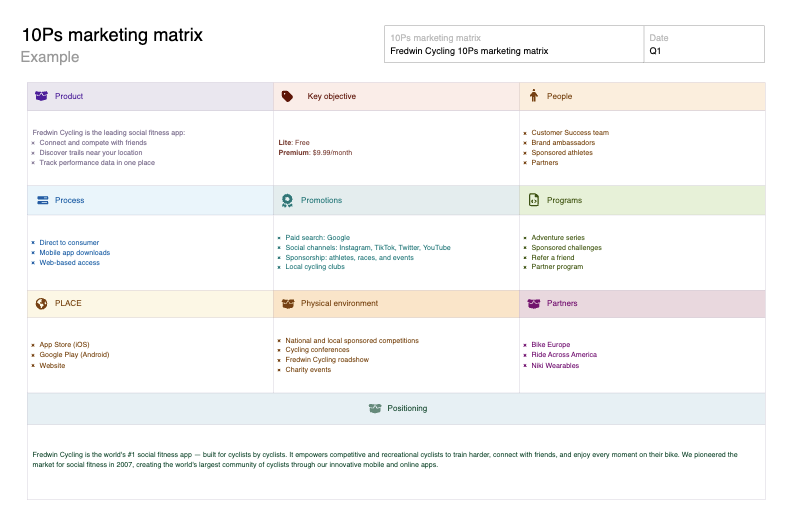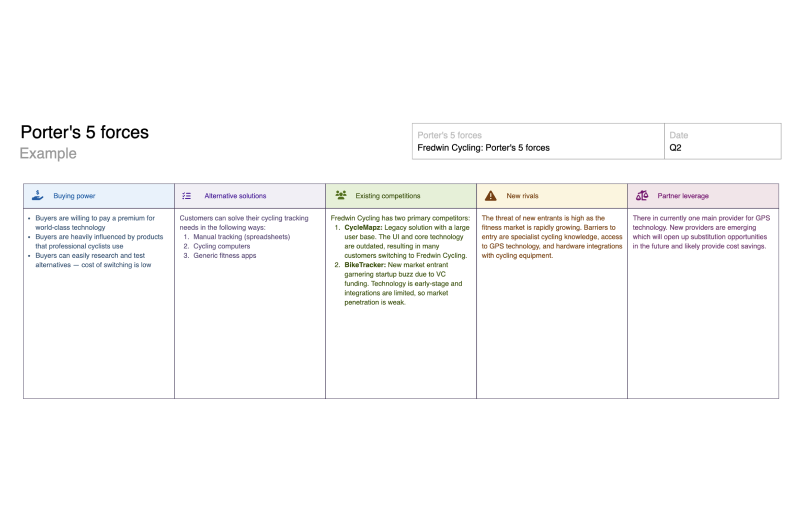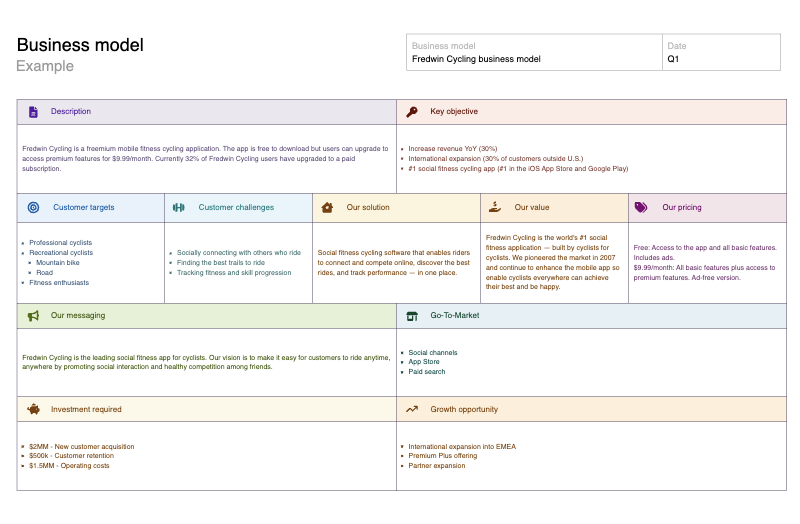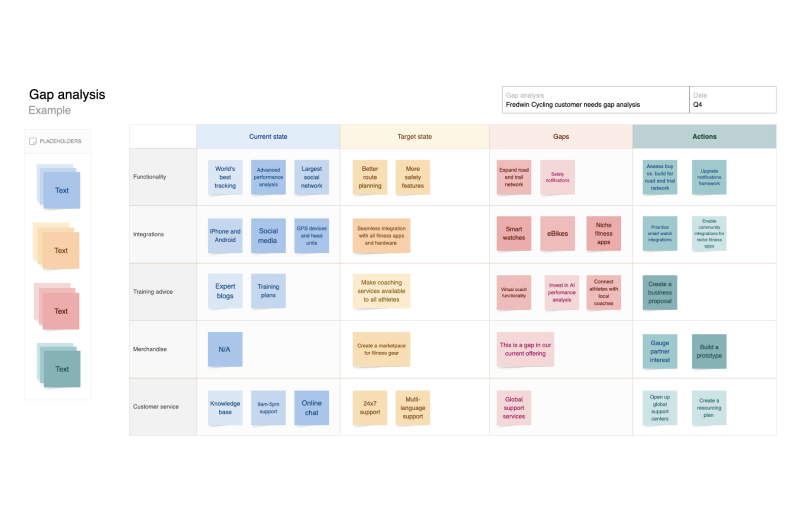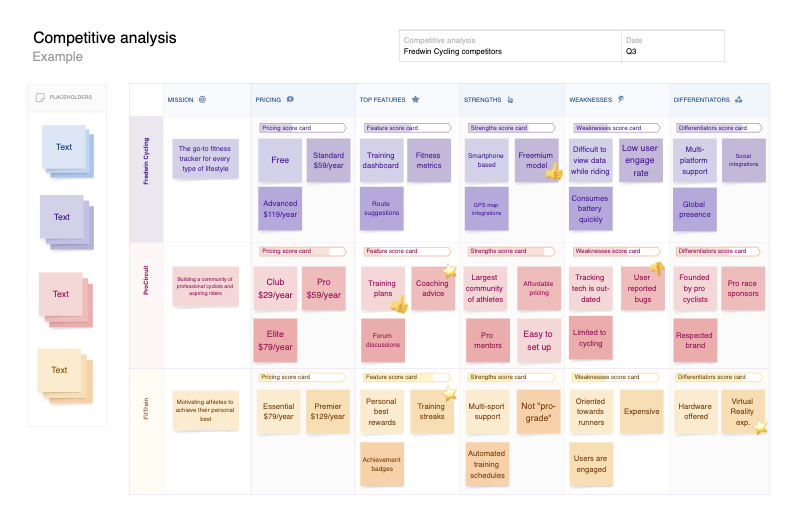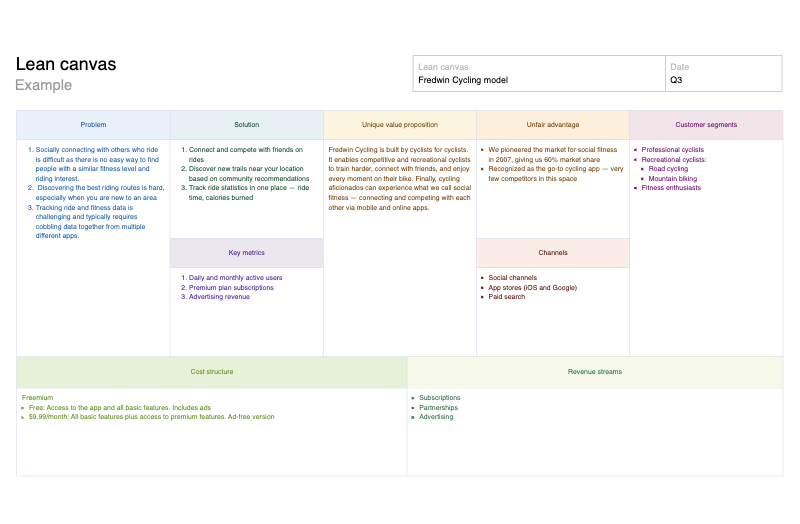SWOT analysis template
Identify internal and external factors that could impact the success of your business or product
Use template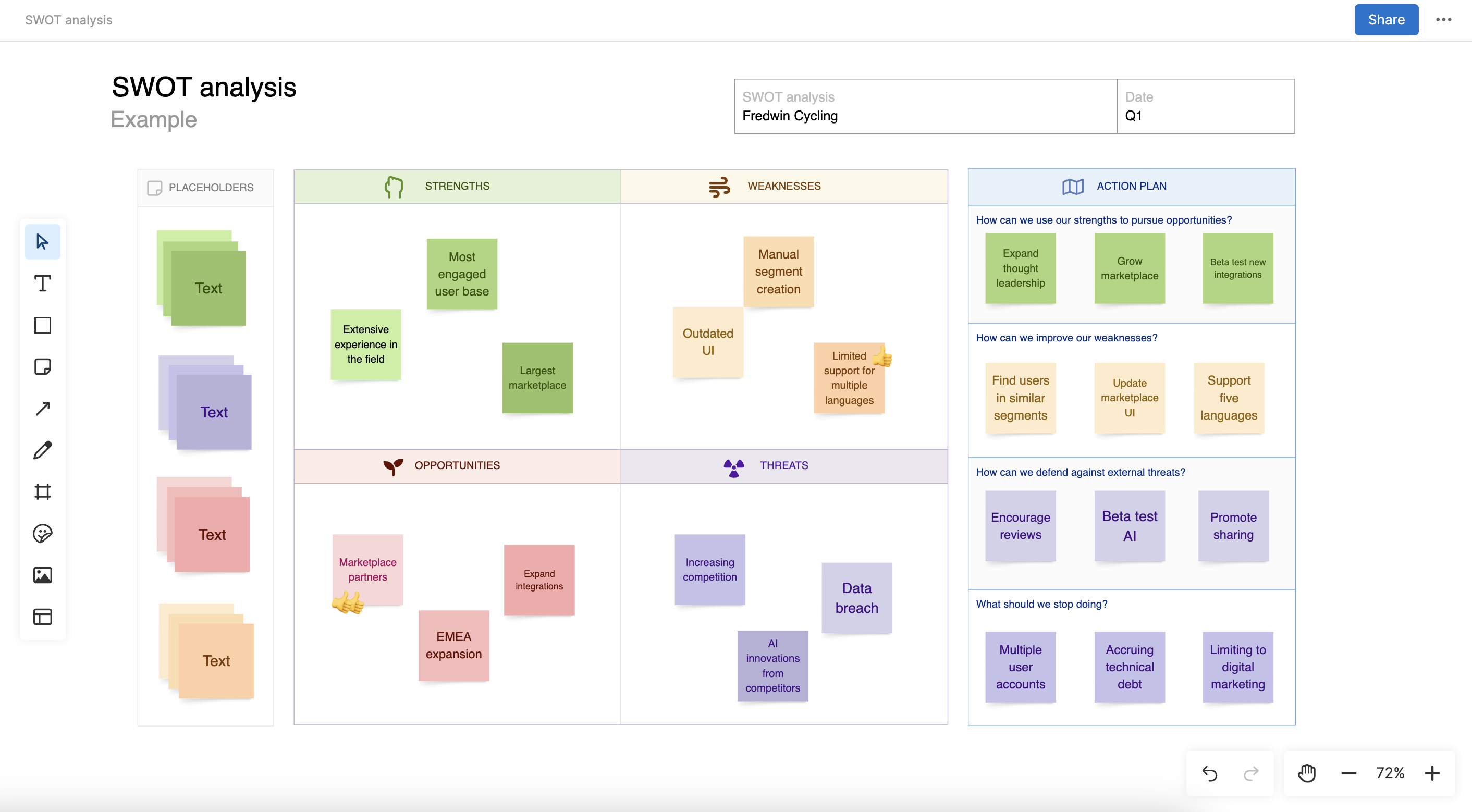
About the SWOT analysis template
Weigh strengths and opportunities against weaknesses and threats. Use this SWOT template to highlight what your product excels at and where to make improvements — so you get a clear view of the landscape ahead. By analyzing these factors, your team can make sharper decisions, focus on the most impactful initiatives, and create a strategic plan that accelerates progress. Whether you are launching something new or refining an existing product, a SWOT analysis provides the foundation for smarter, more focused action.
Included in the SWOT analysis template
This pre-formatted SWOT template supports your analysis with these built-in capabilities:
A menu of classic whiteboard features such as shapes, sticky notes, grids, emojis, and additional templates to add to your document
Easily accessible best practices and a pre-filled SWOT analysis example for guidance
Inline comments to capture collaborator feedback, questions, and ideas
A voting tool to help you decide on priorities
An action plan matrix to note next steps
Presentation frames to easily share your work
How to use the SWOT analysis template
Business leaders and product managers perform SWOT analyses to identify internal factors (strengths and weaknesses) and external ones (opportunities and threats) that impact business or product success. This exercise helps uncover potential growth areas and address challenges in the competitive landscape.
Start by listing strengths that give you an edge over competitors. Then, consider factors that might place you at a disadvantage. Next, highlight growth opportunities in your market, and conclude by noting potential threats to product success. Refer to common examples in each SWOT quadrant to get a better sense of strengths, weaknesses, opportunities, and threats.
The SWOT analysis template provides a clear snapshot of your product's current position in the market. Use it to develop strategies that tackle each area of the analysis effectively.
Best practices
Consider your product and the market from different vantage points.
Identify internal factors: Assess your business or product's characteristics in relation to your competitors, and add them as strengths or weaknesses on the matrix.
Analyze external forces: Consider how your market landscape could positively or negatively impact business success. Note these in the opportunities and threats quadrants.
Share and refine: Invite teammates to add context, insights, questions, and new ideas. Vote on the items that are most important to your business.
Define next steps: Use the built-in action plan to reflect on specific areas to invest in going forward and what to stop doing. This helps you maximize the potential value of your company or products.
FAQs about the SWOT analysis template
Why is SWOT analysis important?
SWOT analysis helps you make more strategic decisions about your business or product. When you clearly understand your offering's strengths, weaknesses, opportunities, and threats, you can focus the team on the most important areas for growth and improvement.
What are some SWOT analysis best practices?
Do not try to cover everything — set a specific focus for your SWOT analysis. Invite team members who can provide unique perspectives on things like like customer insights or competitive analysis. Avoid overloading each quadrant, and use real data to back up assertions. Finally, treat your SWOT analysis as a living document. Regularly revisit and update it to stay aligned with shifting market conditions.
When should you conduct a SWOT analysis?
Try a SWOT analysis before making critical decisions. SWOT exercises can be particularly useful during early product planning, before launching new functionality, or when entering a new market. A SWOT analysis is also valuable when responding to significant changes in customer needs or within the competitive landscape.
Is this template free to use?
Yes. To use this SWOT analysis template, sign up for a free 30-day trial of Aha! Whiteboards. (You can also try this template in Aha! Roadmaps if you need a complete product management solution.) Customize the template to suit your needs, then share it with as many people as you want (for free) to streamline collaboration.
